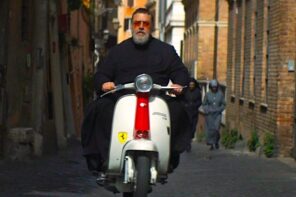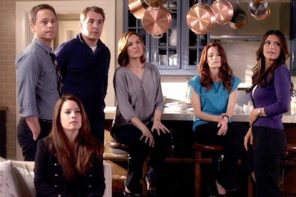Once again, the sex lives of Catholic clergy are seeing a flurry of media attention. During the first week of 2012, Los Angeles Bishop Gabino Zavala announced his resignation after acknowledging that he had fathered two children with the same woman.
Zavala’s announcement trailed just a few days behind the appointment, on January 1, of Jeffrey Steenson as the chief pastor of the Ordinariate of the Chair of St. Peter. Steenson is a married Catholic priest. His new position as head of the Ordinariate confers upon him all of the duties of a Catholic bishop, with the exception of the power to ordain priests, a prerogative reserved only to the celibate.
“There will soon be even more married Catholic priests in America,” as Mark Oppenheimer of the New York Times reported, suggesting that “married priests raise provocative questions for the Catholic Church.”
Oppenheimer asked:
First, are they doing as good a job as other priests? If the church has decided that celibacy confers certain gifts on priests, does it follow that married priests are worse at serving their congregations? Second, wouldn’t celibate priests be a little resentful of colleagues who get to serve the church and have sex too? And third, if the married priests are doing a good job and not provoking envy, why keep the celibacy rule for priests in general?
The issues that the Times identifies here, however, are slightly off-target. The admission of married priests through the Ordinariate does not challenge the Catholic commitment to celibacy; indeed, it maps even more clearly the limited terrain within which sexual activity is permitted among practicing Catholics.
In fact, it is only a loophole in Catholic teaching on priestly celibacy that has allowed Steenson and other married clergy to achieve Catholic ordination.
The growth in number of married Catholic priests in the U.S. stems from the increasing animosity of conservative Episcopalians who disagree primarily with the Anglican Communion’s ordination and promotion to the episcopacy of women and self-identifying, partnered gay people. This phenomenon, then, is due not to liberalizing papal canon as much as it is due to the Catholic Church taking advantage of the disillusionment Episcopal priests feel about what they consider the liberal tilt of the Anglican church. The rise in numbers of married Catholic priests is fundamentally wed, as a result, to matters of human sexuality.
The history of this development is deeper than that of the most recent cultural wars, however, and further illuminates what lies at stake for the church. The reason that these married priests are able to be ordained in the Catholic Church is due to a loophole or “pastoral provision” introduced by Pope John Paul in 1980. The provision was tentative, “provisionary,” in that it was conceived as a study of how Episcopal priests, including married priests, might be ordained in Catholic dioceses in the United States. The orthodox justification for such a study had been intimated even earlier, in 1967, when Pope Paul VI, writing specifically on the issue of sacerdotal celibacy suggested that circumstances might arise in which married Christian ministers could be considered for the performance of priestly functions.
According to Paul’s encyclical:
In virtue of the fundamental norm of the government of the Catholic Church, to which We alluded above, (82) while on the one hand, the law requiring a freely chosen and perpetual celibacy of those who are admitted to Holy Orders remains unchanged, on the other hand, a study may be allowed of the particular circumstances of married sacred ministers of Churches or other Christian communities separated from the Catholic communion, and of the possibility of admitting to priestly functions those who desire to adhere to the fullness of this communion and to continue to exercise the sacred ministry. The circumstances must be such, however, as not to prejudice the existing discipline regarding celibacy.
In other words, Pope John Paul’s 1980 pastoral provision was the enactment of Paul’s proposed “study” of what might happen when married priests were ordained. The results of this study showed success—married priests could indeed perform the sacerdotal functions with dignity! In fact, those three parishes performed their Catholic functions with such adequacy that in November of 2009, Pope Benedict XVI promulgated an apostolic constitution, Anglicanorum Coetibus, that authorized the creation of ordinariates. Ordinariates are juridically similar to dioceses. They are Catholic, and accept all of the Catholic teachings on abortion and sexual relations. Their leaders, Episcopalian priests, who also generally happened to be married, are now Catholic priests.
The point here is that the creation of the Ordinariate is about sex, and resoundingly so. It affirms, not questions or challenges, the Catholic teaching on priestly celibacy and procreative marital sexuality. In fact some outspoken Catholic leaders, like Cardinal Donald Wuerl, have even suggested that the questions posed by the presence of married Catholic priests will disappear within a generation as potential seminary applicants who wish to enter the ordinariate must choose to commit to celibacy.
The creation of the Ordinariate has firm historical roots in Catholic doctrine on priestly celibacy. So while members of the Ordinariate may celebrate their homecoming into Catholic fullness of the faith, let them know that their whole reason for being lies in matters of limiting the sphere of permissible human sexuality.
Bishop Zavala, after a career of service to 66 churches and advocacy for immigration rights and the conditions of the working poor, still resigned. Catholic teachings on the dignity of human sexuality have hardly been challenged.




